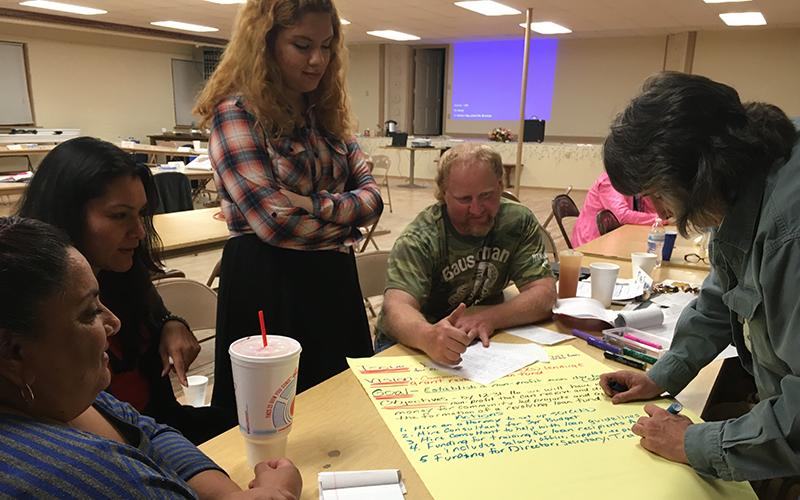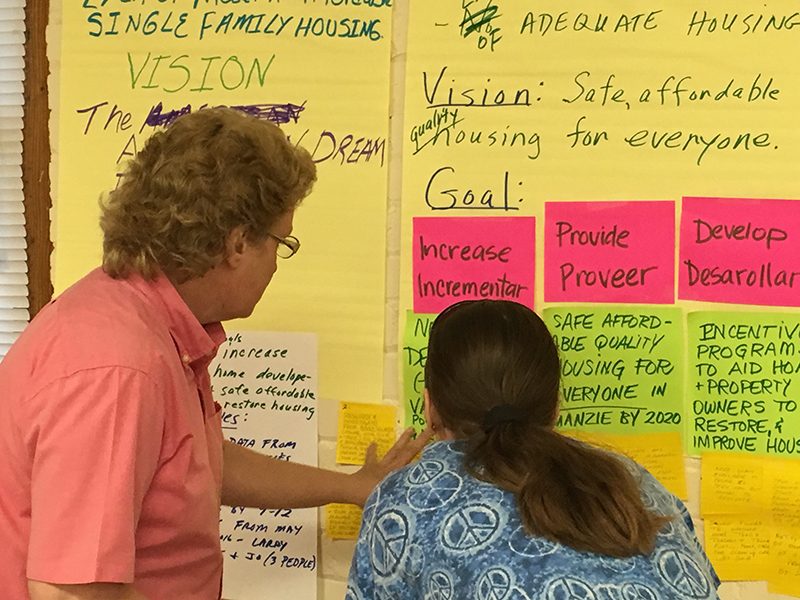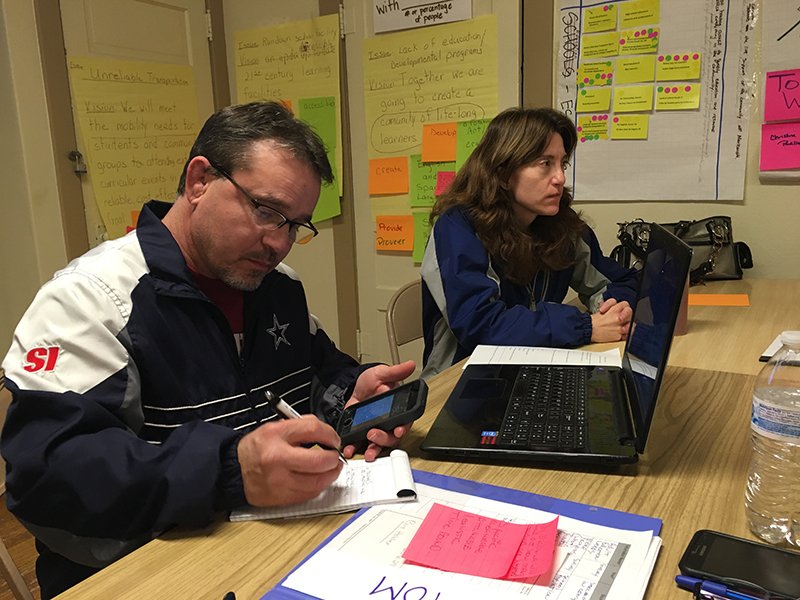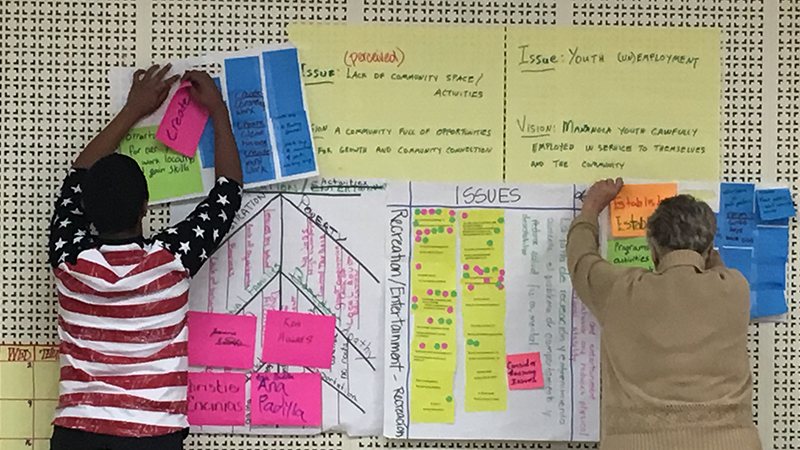An Agricultural Town Works Together for Change
Leer en español
Manzanola residents gathered on a recent Tuesday in March to draft plans for their town. Photos by Kristin Jones
By Kristin Jones
About 7 percent of the entire population of Manzanola, Colo. showed up on a recent Tuesday night for a community gathering that has become a weekly ritual, with the objective of envisioning a better future for the agricultural town of 400.
Rainy Melgosa moved here from Denver when she was seven years old in 1971, and says she immediately felt like “a country girl at heart.” She was at the meeting because she loves the town and its history, and wants to revive it after some hard decades of decline.
Maria Guadalupe Garcia moved here in 2004 from San Luis Potosi, Mexico, to work the fields. She and her husband decided to stay to alleviate the stress on their children of constantly travelling for seasonal work. She wants to see the town blossom for her kids.
Bill Hendren arrived in town six and a half years ago to reacquaint himself with his mother before she died. He was in attendance to represent the experience of being homeless.
The three were among more than two dozen members of this farming community who stooped over butcher paper, deployed post-it notes on the walls, overcame language barriers and inevitable digressions to write down their visions and goals for their town, and make concrete plans that became increasingly tangible as the two-hour gathering went on.
Like other communities across the state, these neighbors in Manzanola are coming together in hopes of gaining funding from The Colorado Trust for their initiatives.
The most crowded table, which included Melgosa, Garcia and Hendren, had thought up an idea for a nonprofit economic development organization.
Melgosa opened Manzanola Trading Company last year to sell hardware and antiques as a labor of love, but there isn’t much other business in town—not even a diner or a gas station. The neighbors’ idea was to offer low-interest loans and grants for community-led projects that would boost the town’s economy and benefit its residents. Melgosa wrote down ideas that came so fast her hand got tired, and she had to hand the marker to someone else.
Garcia doesn’t speak English, so Yesenia Beascochea, a Pueblo-based organizer, translated for her. Garcia likes to say that the only stupid question is the one you don’t ask. The week before this meeting, she asked the group to explain a 501(c)(3), referring to the structure of the nonprofit they’re hoping to create. They did. “I’m learning so much,” said Garcia.
Every now and then, somebody paused the proceedings to marvel at what they were doing.
“If you would have told me six weeks ago that I’d be sitting around a table talking about forming a 501(c)(3), I’d have said you were nuts,” said Bradley Roe, who spent much of his childhood here and renovates the town’s old houses for a living.
Then they went right back to the list: They’ll need to hire an attorney to set up the nonprofit by year’s end, they decided; talk to a consultant about crafting a three-year budget; and provide training to loan recipients.
Across the room, there were other plans being hatched at other tables. Sidewalks need to be repaired. “The whole town needs to be rebuilt. Trump will do it, right?” said one resident, laughing. The kids need more after-school activities, and the school superintendent sat at a table with his neighbors listing everything they’d need to be able to take kids to a neighboring community for swim team.
At the table dedicated to a need for a recreational space, the conversation was temporarily sidetracked by a lengthy digression on the subjects of dandelions: One person recounted her futile attempts to get rid of them, while another waxed poetic about their many uses.
No matter. Long-time resident Jeanne Smith (too many dandelions) admitted feeling overwhelmed by the job they were taking on, until she came to an epiphany in her garden the other day: She didn’t have to do it by herself. “There’s a tremendous group of people who are doing a tremendous job,” she said.
That was a common sentiment expressed by the Manzanola team: How much agreement there was, how much teamwork. Each of them had their own personal worries to go home to that night: A high-interest mortgage with unaffordable payments; a temporary home with no running water; a wife whose job is far away from here.
For those two hours, at least, they were in it together.


